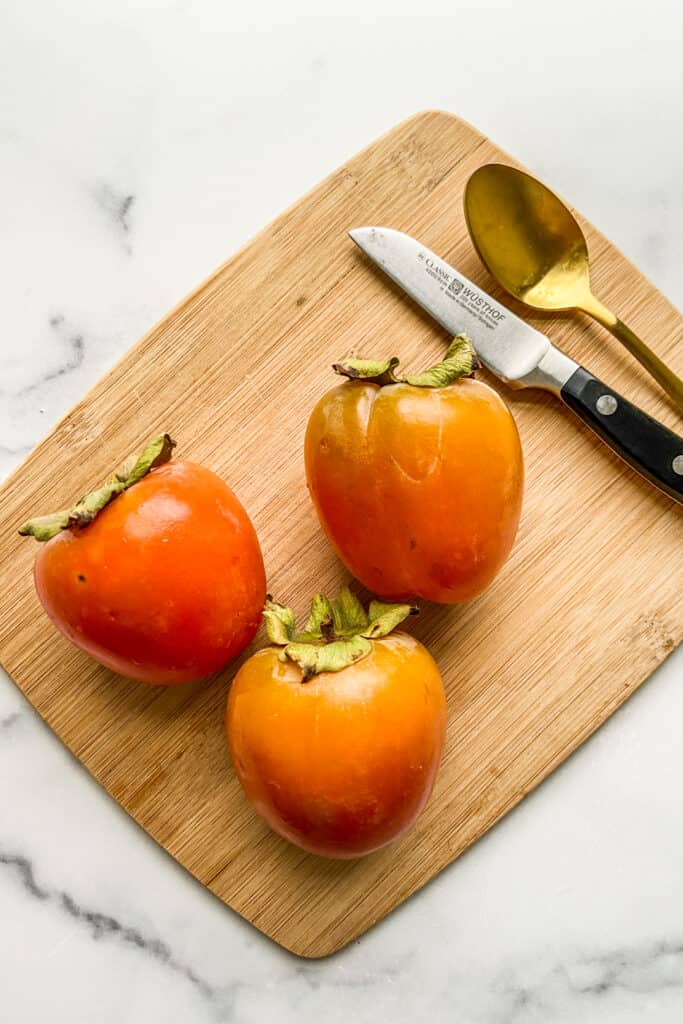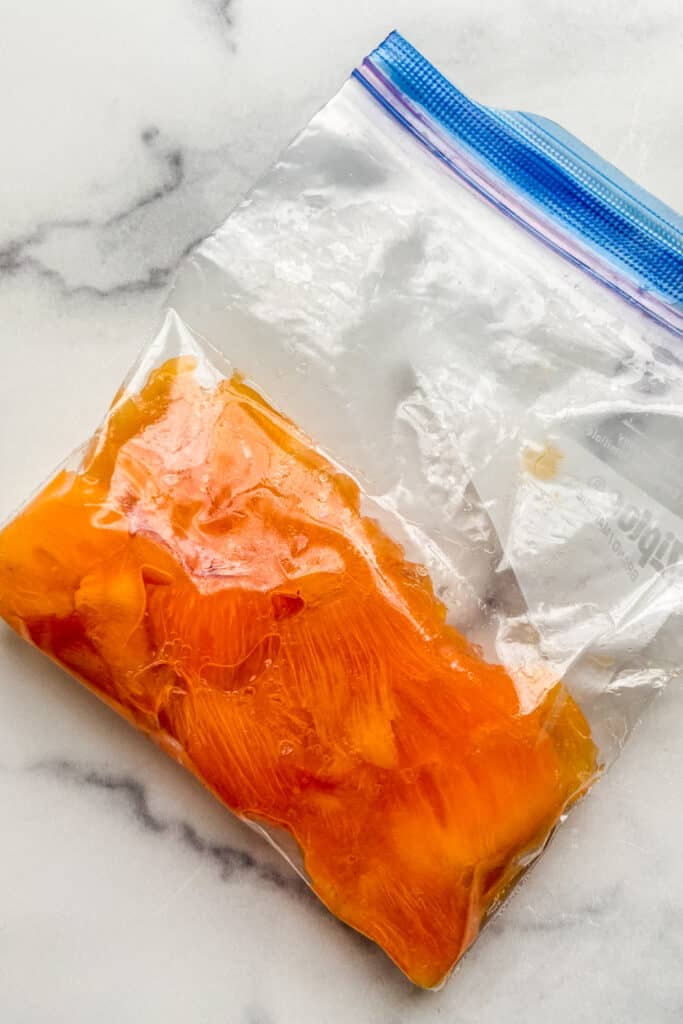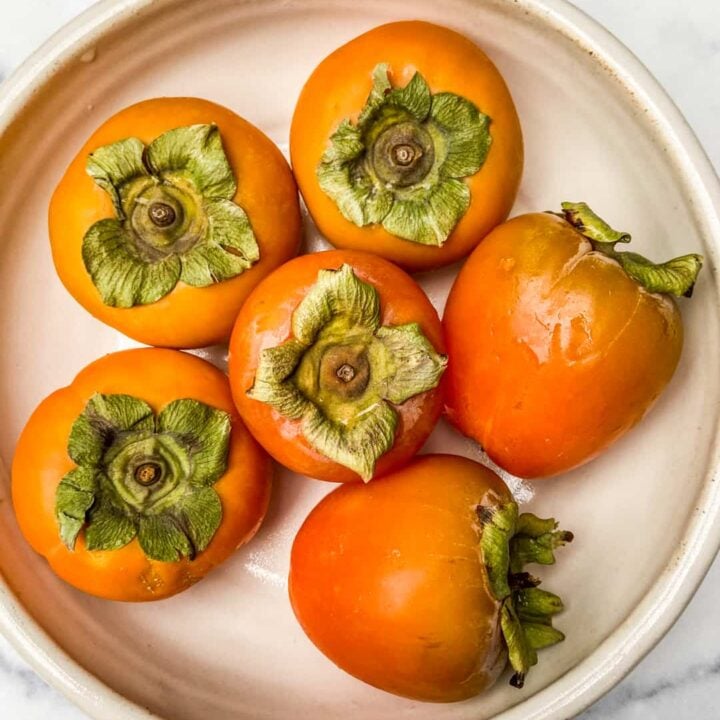There are two main types of persimmons - hachiya and fuyu persimmons. They're both a deep orange color but have slightly different shapes and uses.
Fuyu persimmons are round and squat and can be eaten when firmer. They're tangy and great in salads and eaten raw.
Hachiya persimmons are best when they are softer and riper. They get a jammy consistency which is perfect in baked goods.
What Are Persimmons?
Persimmons are an edible fruit (technically a berry) with a mild, sweet flavor. They were first cultivated in China and later spread to Japan and Korea.
Now they're grown across the world in temperate climates and are available from late fall to early winter.

Persimmon Season
Persimmons are generally in season from late fall to early winter.
Fuyu persimmons are in season from early October to late December. Hachiya persimmons are in season in November and December. If you're lucky you might find some in January as well!
How many types of persimmons are there?
There are two main types of persimmons - the astringent variety (like hachiya) and the non-astringent (like fuyu).
The non-astringent can be eaten fresh and have a mild, sweet flesh. The astringent variety have bitter skin with a jammy interior when they're fully ripe.
When are persimmons ripe?
Sweet fuyu persimmons are ripe when they're orange. They can be eaten like an apple when they are firm.
Hachiya persimmons are ripe when they are soft and squishy and the insides can be scooped out.
What do persimmons taste like?
Persimmons have a mild and sweet flavor that's similar to a pear or apricot. They're often described as having a honey-like flavor.
Where are persimmons from?
Persimmons were originally cultivated in Asia - primarily in China and Japan. They're grown around the world now and are hardy enough to grow in many climates.
Can you freeze persimmons?
You can freeze persimmons very easily! Fuyu persimmons can be cut and frozen with their skins, while hachiya persimmons should have the flesh removed from the skin before freezing.


Persimmon Recipes
If you like cooking with persimmons or using them in recipes try some of these fuyu persimmon recipes and hachiya persimmon recipes.
- Persimmon Salad - This delicious fuyu persimmon salad with pear and kale is a real treat. This tasty salad makes a great side dish or wonderful light lunch.
- Persimmon Bread - This persimmon bread recipe is wonderful and full of flavor! It's a delicious way to enjoy hachiya persimmons and a very easy bread to make.
- Persimmon Prosciutto Crostinis - This simple recipe for persimmon prosciutto crostinis with homemade ricotta is a wonderful appetizer, snack, or light lunch. The flavors work together wonderfully.
- Persimmon Cookies - Spicy, soft, and moist persimmon cookies with raisins and a sweet orange glaze. This persimmon cookie recipe uses ripe Hachiya persimmons.
How to Freeze Persimmons

Here's how to freeze hachiya or fuyu persimmons.
Ingredients
- fuyu or hachiya persimmons
- freezer bag
Instructions
- For fuyu persimmons: If making a puree, blend in a food processor or blender until it's a paste. Place in a freezer bag and freeze for up to 6 months. If freezing in chunks, chop into desired pieces and place in a freezer bag, and freeze for up to 6 months.
- For hachiya persimmons: When the persimmons are very ripe and are squishy, cut the top off the persimmon and scoop the flesh out from inside. Place the flesh in a freezer bag and freeze for up to 6 months. DIscard the skins.
Mary
Friday 23rd of December 2022
What about native persimmons? We grow American Yates, native to the state of Indiana.
EW
Friday 23rd of December 2022
I've only gotten my hands on native persimmons once (I got them at a farmer's market and there weren't many available). While I loved them, I don't feel I have enough first-hand experience with them to explain how to use them in cooking or baking (the ones I had were very seedy - only good for eating as a snack). How do you like to use them?